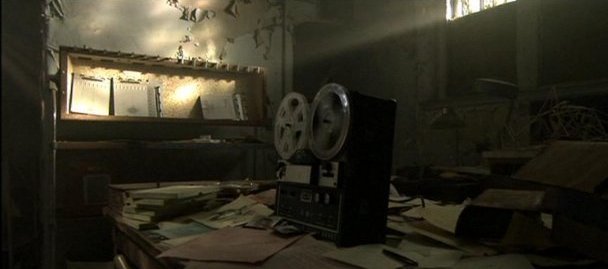Underrated Horror: Session 9
It’s often hard to distinguish between a “thriller” and “horror” movie. I suppose we could take a stab though. I would argue that thrillers are usually fast paced, suspenseful, atmospheric, and fairly dependant upon character development. Horror movies, on the other hand, would be more dependant upon scares, creepiness, and violence, with the cast being somewhat expendable. Movies like Jacob’s Ladder, One Hour Photo, and The Lovely Ones blur those lines, but they’re also a fairly rare breed. The movie we’ll be discussing today is also of that brood: the low-budget psychological horror classic, Session 9.
From the outside looking in, Session 9 appears to be just another ho-hum ghost story. It’s plot is centred on an asbestos cleaning crew that starts encountering strange occurrences when they take a job cleaning out a decommissioned mental hospital. It could be easy enough to simply write off their traumas as nasty spirits, but that would belie the narrative complexity and unique plot delivery built into the film by underrated horror director Brad Anderson. Anderson spends a lot of time setting up the location of the film, as I suppose he would if this were in fact a ghost story. The hospital’s dark history is revealed through informal conversations between the crew, long and sweeping shots that detail the nooks and crannies of the abandoned sanitarium, and several characters having pivotal moments in a few select and creepy locations. By the halfway point of the film, the local appears to be so legitimately creepy that it develops a character of its own. It’s a great environment, but as I alluded to — the focus is not on the weary undead.
The story revolves around Gordon, the increasingly-desperate owner of an asbestos removal company who, with his team, agrees to work in the long-neglected mental institution under an extremely short period to save his business and provide for his growing family. When one of his workers finds some old tapes of the psychiatric sessions of a patient simply named Mary, things start to go haywire for the cleaning crew. Mary appeared to sport multiple personality disorders, chronicled by Sessions 1 through 9, and you get the feeling that something inhuman played a part in her stay at the institution. After a number of mishaps and odd occurrences, the audience is left to wonder whether the workers are beginning to go insane due to their surroundings or if something sinister is stirring within the institution.
The atmosphere of this film is really thick, but it still takes a backseat to character development. Every one of the workers has a reason to be in the mental hospital, with Gordon being the most well-rounded character in the pack. This film smartly takes the “show, but don’t tell” approach to filmmaking, and reveals more details through flashbacks and hallucinations than crude, mindless exposition. We bond with these characters because of how grounded they appear to be and it really hits home when people become missing or seemingly die.
More than anything this film’s setting, story, or tone can offer, the message of Session 9 is an extremely powerful and thought provoking one. I won’t spoil anything, but the final moment of screentime is a decidedly shocking one. The viewer would do well to carefully view everything in every scene, while trying to break down hidden meanings as they watch. This film isn’t just an underrated horror gem — it may very well be the single greatest psychological horror film ever produced. Any and all horror buffs should indulge in Session 9 this Halloween season.









